Brief
Feb 07 2017
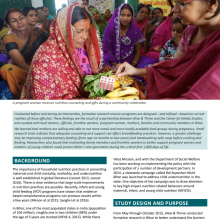
Nutrition practices in Bihar: Results of a formative research study
Alive & Thrive conducted formative research to better understand the nutrition practices in Bihar. We learned that mothers are willing and able to eat more meals and more locally available food groups during pregnancy. Read our formative research brief to learn about other findings.
Brief
Feb 19 2016
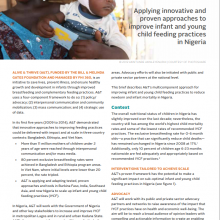
Applying innovative and proven approaches to improve infant and young child feeding practices in Nigeria
The overall nutritional status of children in Nigeria has slightly improved over the last decade; nevertheless, the country still has among the world’s highest child mortality rates and some of the lowest rates of recommended IYCF practices.
Report
Jun 18 2015
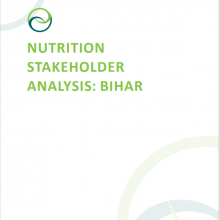
Nutrition Stakeholder Analysis: Bihar, India
This report describes the methodology, results, and recommendations from a stakeholder landscape study that intended to capture a snapshot of nutrition stakeholders in Bihar, India, and to develop an understanding of how they interact with each other to achieve nutrition outcomes.
Report
Oct 28 2014
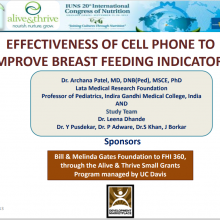
Small grants program: Improving breastfeeding practices through cell phone counseling in India
The goal of this project was to examine the effect on breastfeeding (BF) rates of providing mothers with cell phone-based breastfeeding (BF) counseling in addition to maternity hospital retraining in the Baby-friendly Hospital Initiative (BFHI).
Report
Oct 28 2014

mHealth and Baby-friendly Hospital Initiative for Breastfeeding
Cell phone-based breastfeeding counseling, coupled with retraining of hospital staff in the Baby-friendly Hospital Initiative, increased rates of early initiation and exclusive breastfeeding in India.
Journal article
May 08 2014
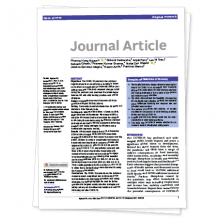
Small grant: Integrating group counseling, cell phone messaging, and participant-generated songs and dramas into a microcredit program increases Nigerian women's adherence to international breastfeeding recommendations
In northern Nigeria, interventions are urgently needed to narrow the large gap between international breastfeeding recommendations and actual breastfeeding practices.

